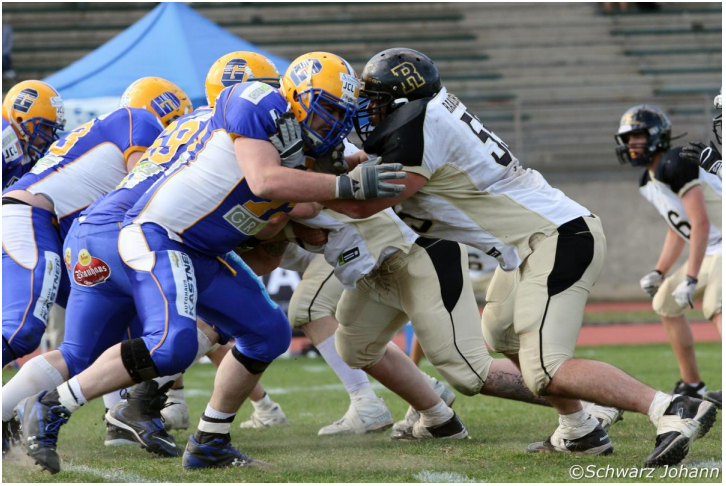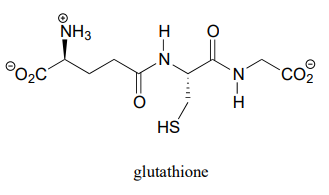15.1: Prelude to Oxidation and Reduction Reactions
- Page ID
- 106385
\( \newcommand{\vecs}[1]{\overset { \scriptstyle \rightharpoonup} {\mathbf{#1}} } \)
\( \newcommand{\vecd}[1]{\overset{-\!-\!\rightharpoonup}{\vphantom{a}\smash {#1}}} \)
\( \newcommand{\id}{\mathrm{id}}\) \( \newcommand{\Span}{\mathrm{span}}\)
( \newcommand{\kernel}{\mathrm{null}\,}\) \( \newcommand{\range}{\mathrm{range}\,}\)
\( \newcommand{\RealPart}{\mathrm{Re}}\) \( \newcommand{\ImaginaryPart}{\mathrm{Im}}\)
\( \newcommand{\Argument}{\mathrm{Arg}}\) \( \newcommand{\norm}[1]{\| #1 \|}\)
\( \newcommand{\inner}[2]{\langle #1, #2 \rangle}\)
\( \newcommand{\Span}{\mathrm{span}}\)
\( \newcommand{\id}{\mathrm{id}}\)
\( \newcommand{\Span}{\mathrm{span}}\)
\( \newcommand{\kernel}{\mathrm{null}\,}\)
\( \newcommand{\range}{\mathrm{range}\,}\)
\( \newcommand{\RealPart}{\mathrm{Re}}\)
\( \newcommand{\ImaginaryPart}{\mathrm{Im}}\)
\( \newcommand{\Argument}{\mathrm{Arg}}\)
\( \newcommand{\norm}[1]{\| #1 \|}\)
\( \newcommand{\inner}[2]{\langle #1, #2 \rangle}\)
\( \newcommand{\Span}{\mathrm{span}}\) \( \newcommand{\AA}{\unicode[.8,0]{x212B}}\)
\( \newcommand{\vectorA}[1]{\vec{#1}} % arrow\)
\( \newcommand{\vectorAt}[1]{\vec{\text{#1}}} % arrow\)
\( \newcommand{\vectorB}[1]{\overset { \scriptstyle \rightharpoonup} {\mathbf{#1}} } \)
\( \newcommand{\vectorC}[1]{\textbf{#1}} \)
\( \newcommand{\vectorD}[1]{\overrightarrow{#1}} \)
\( \newcommand{\vectorDt}[1]{\overrightarrow{\text{#1}}} \)
\( \newcommand{\vectE}[1]{\overset{-\!-\!\rightharpoonup}{\vphantom{a}\smash{\mathbf {#1}}}} \)
\( \newcommand{\vecs}[1]{\overset { \scriptstyle \rightharpoonup} {\mathbf{#1}} } \)
\( \newcommand{\vecd}[1]{\overset{-\!-\!\rightharpoonup}{\vphantom{a}\smash {#1}}} \)
\(\newcommand{\avec}{\mathbf a}\) \(\newcommand{\bvec}{\mathbf b}\) \(\newcommand{\cvec}{\mathbf c}\) \(\newcommand{\dvec}{\mathbf d}\) \(\newcommand{\dtil}{\widetilde{\mathbf d}}\) \(\newcommand{\evec}{\mathbf e}\) \(\newcommand{\fvec}{\mathbf f}\) \(\newcommand{\nvec}{\mathbf n}\) \(\newcommand{\pvec}{\mathbf p}\) \(\newcommand{\qvec}{\mathbf q}\) \(\newcommand{\svec}{\mathbf s}\) \(\newcommand{\tvec}{\mathbf t}\) \(\newcommand{\uvec}{\mathbf u}\) \(\newcommand{\vvec}{\mathbf v}\) \(\newcommand{\wvec}{\mathbf w}\) \(\newcommand{\xvec}{\mathbf x}\) \(\newcommand{\yvec}{\mathbf y}\) \(\newcommand{\zvec}{\mathbf z}\) \(\newcommand{\rvec}{\mathbf r}\) \(\newcommand{\mvec}{\mathbf m}\) \(\newcommand{\zerovec}{\mathbf 0}\) \(\newcommand{\onevec}{\mathbf 1}\) \(\newcommand{\real}{\mathbb R}\) \(\newcommand{\twovec}[2]{\left[\begin{array}{r}#1 \\ #2 \end{array}\right]}\) \(\newcommand{\ctwovec}[2]{\left[\begin{array}{c}#1 \\ #2 \end{array}\right]}\) \(\newcommand{\threevec}[3]{\left[\begin{array}{r}#1 \\ #2 \\ #3 \end{array}\right]}\) \(\newcommand{\cthreevec}[3]{\left[\begin{array}{c}#1 \\ #2 \\ #3 \end{array}\right]}\) \(\newcommand{\fourvec}[4]{\left[\begin{array}{r}#1 \\ #2 \\ #3 \\ #4 \end{array}\right]}\) \(\newcommand{\cfourvec}[4]{\left[\begin{array}{c}#1 \\ #2 \\ #3 \\ #4 \end{array}\right]}\) \(\newcommand{\fivevec}[5]{\left[\begin{array}{r}#1 \\ #2 \\ #3 \\ #4 \\ #5 \\ \end{array}\right]}\) \(\newcommand{\cfivevec}[5]{\left[\begin{array}{c}#1 \\ #2 \\ #3 \\ #4 \\ #5 \\ \end{array}\right]}\) \(\newcommand{\mattwo}[4]{\left[\begin{array}{rr}#1 \amp #2 \\ #3 \amp #4 \\ \end{array}\right]}\) \(\newcommand{\laspan}[1]{\text{Span}\{#1\}}\) \(\newcommand{\bcal}{\cal B}\) \(\newcommand{\ccal}{\cal C}\) \(\newcommand{\scal}{\cal S}\) \(\newcommand{\wcal}{\cal W}\) \(\newcommand{\ecal}{\cal E}\) \(\newcommand{\coords}[2]{\left\{#1\right\}_{#2}}\) \(\newcommand{\gray}[1]{\color{gray}{#1}}\) \(\newcommand{\lgray}[1]{\color{lightgray}{#1}}\) \(\newcommand{\rank}{\operatorname{rank}}\) \(\newcommand{\row}{\text{Row}}\) \(\newcommand{\col}{\text{Col}}\) \(\renewcommand{\row}{\text{Row}}\) \(\newcommand{\nul}{\text{Nul}}\) \(\newcommand{\var}{\text{Var}}\) \(\newcommand{\corr}{\text{corr}}\) \(\newcommand{\len}[1]{\left|#1\right|}\) \(\newcommand{\bbar}{\overline{\bvec}}\) \(\newcommand{\bhat}{\widehat{\bvec}}\) \(\newcommand{\bperp}{\bvec^\perp}\) \(\newcommand{\xhat}{\widehat{\xvec}}\) \(\newcommand{\vhat}{\widehat{\vvec}}\) \(\newcommand{\uhat}{\widehat{\uvec}}\) \(\newcommand{\what}{\widehat{\wvec}}\) \(\newcommand{\Sighat}{\widehat{\Sigma}}\) \(\newcommand{\lt}{<}\) \(\newcommand{\gt}{>}\) \(\newcommand{\amp}{&}\) \(\definecolor{fillinmathshade}{gray}{0.9}\)
Introduction
Theo Ross was not doing very well at his summer job, and he was frustrated. His boss had given him specific instructions, and yet Theo kept botching the job, over and over again. Theo was not used to failure – he had achieved almost perfect scores on both the ACT and SAT college entrance exams, and was headed to Stanford University in the fall. Why couldn't he get it right? It wasn't brain surgery, after all.
Well, actually – it was brain surgery.
An April 17, 2014 article in Sports Illustrated tells Theo's story. Wanting to do something interesting over the summer of 2010 before he started college, Theo had applied for a research internship at the National Institutes of Health in Bethesda, Maryland. This was an extremely competitive program normally reserved for outstanding college students, but somehow Theo had managed to win a coveted spot in the program, working with Dr. Dorian McGavern, a neurologist studying how meningitis effects the brain. Dr. McGavern assigned Theo the task of performing 'skull-thinning' surgery on mice, part of which involved using a special saw to shave down a small section of the bone in order to gain access to the brain. It was a delicate procedure, something that even some experienced neurosurgeons who had tried it had found challenging. Any small slip resulted in a concussion to the mouse's brain, rendering it useless for the study. Theo just couldn't get the hang of it, and ended up concussing one mouse after another.
You have probably heard the old expression: “when life gives you lemons, make lemonade”. Theo made a lot of lemonade that summer.
Theo and Dr. McGavern eventually realized that his failure at the procedure actually presented an opportunity to observe what happens to a brain right after a concussive injury. Theo started doing more skull-thinning surgeries, but now the goal was to cause concussion, rather than to avoid it. The concussed mice (who had been anaesthetized prior to the surgery) were immediately strapped under a microscope so that Theo could observe how their brains responded to the injury. This was new, and very exciting stuff: most of what neurologists knew about concussions up to that point had come from MRI (magnetic resonance imaging – see chapter 5) or autopsies. Nobody knew very much about what happens at the cellular level in a brain in the minutes and hours after a concussion has occurred. In addition, the problem of traumatic head injuries and the long-lasting effects they cause was becoming an increasingly hot topic in the news, critically relevant to thousands of veterans returning from Iraq and Afghanistan as well as to football players and other athletes in contact sports– including Theo, who had been a competitive wrestler in high school. (You might have been wondering why Theo's story appeared in Sports Illustrated – now you know.)
Theo spent the rest of that summer, and every spring break and summer vacation over the next few years, working in McGavern's lab on the new project. He and McGavern found evidence that the 'hidden' damage to a concussed brain – that which went undetected in MRI scans but could come back to haunt the victim years later in the form of recurring headaches, memory loss, and depression – may be caused by a type of molecule referred to as 'reactive oxygen species', or ROS, leaking from damaged tissues into the brain. ROS are potentially harmful byproducts of respiration such as hydrogen peroxide (\(H_2O_2\)) that are constantly being produced in our cells. Although ROS can cause serious oxidative damage if they are allowed to build up, our bodies have evolved ways to deal with them, using so-called 'ROS scavengers' to convert them to something innocuous like water.
With this new understanding, Theo and his mentor had another idea: what if they could prevent the ROS from causing further damage to a recently concussed brain by applying an scavenger to the injury? After some trial and error, they found that an ROS scavenger compound called glutathione, when applied directly to the skull of a concussed mouse within a few minutes to three hours after the injury, could permeate the bone and react with the ROS. Brain cells from these glutathione-treated mice appeared normal, with none of the signs of ROS damage Theo was used to seeing.

The road from an initial scientific discovery to a safe and effective medical treatment is often a very long one, but Theo Roth and Dorian McGavern appear to have made a discovery that could eventually help prevent some of the most devastating and long-term damage caused by traumatic head injuries. In the end, it's a very good thing that Theo's hands were not cut out for brain surgery.
The chemistry of oxidation and reduction - often called 'redox' chemistry - is central to Theo Roth's discovery about what happens to a concussed brain at the molecular level. This chapter is dedicated to redox chemistry. We'll begin with a reminder of what you learned in General Chemistry about the fundamentals of redox reactions in the context of inorganic elements such as iron, copper and zinc: reduction is a gain of electrons, and oxidation is a loss of electrons. Then, we'll expand our understanding to include bioorganic redox reactivity, examining among other things how alcohols are converted to ketones and aldehydes, aldehydes are converted to carboxylic acids, and amines are converted to imines. We will also talk about redox reactions in the broader context of metabolism in living things.
A central player in some of the biochemical redox reactions we will see is the coenzyme called glutathione, Theo Roth's 'magic bullet' molecule that was able to rescue mouse brain cells from death by oxidation. We'll see how glutathione acts as a mediator in the formation and cleavage of disulfide bonds in proteins, and how it acts as an 'ROS scavenger' to turn hydrogen peroxide into water.


